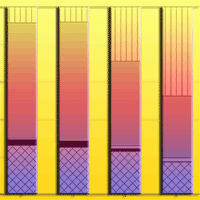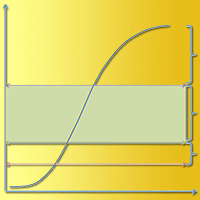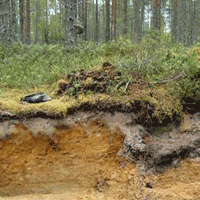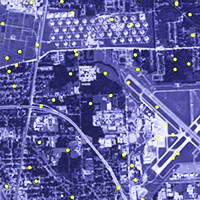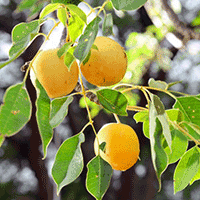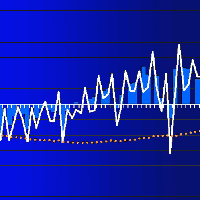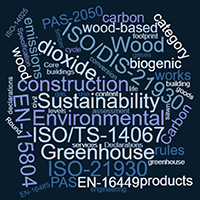
Comparative assessment for biogenic carbon accounting methods in carbon footprint of products: a review study for construction materials based on forest products
Lars GF Tellnes (1) , Christelle Ganne-Chedeville (2), Ana Dias (3), Franz Dolezal (4), Callum Hill (5-6), Edwin Zea Escamilla (7)
iForest - Biogeosciences and Forestry, Volume 10, Issue 5, Pages 815-823 (2017)
doi: https://doi.org/10.3832/ifor2386-010
Published: Sep 25, 2017 - Copyright © 2017 SISEF
Review Papers
Collection/Special Issue: COST action FP1407
Understanding wood modification through an integrated scientific and environmental impact approach
Guest Editors: Giacomo Goli, Andreja Kutnar, Dennis Jones, Dick Sandberg
Abstract
The forest and building sector is of major importance in climate change mitigation and therefore construction materials based on forest products are of great interest. While energy efficiency has had a large focus in climate change mitigation in the building sector, the carbon footprint of the construction material is gaining relevance. The carbon footprint of construction materials can vary greatly from one type to another, the building sector is consequently demanding documentation of the carbon footprint of the materials used. Using an environmental product declaration (EPD) is an objective and standardised solution for communicating the environmental impacts of construction products and especially their carbon footprint. Nevertheless, it is challenging to include the features of forest products as pools of carbon dioxide. There is currently a focus on research into methods for the accounting of sequestered atmospheric carbon dioxide and also implementation of these methods into technical standards. This paper reviews the recent research and technical standards in this field to promote a common understanding and to propose requirements for additional information to be included in EPDs of forest-based products. The main findings show the need for reporting the contribution of biogenic carbon to the total on greenhouse gas emissions and removals over the product’s lifecycle. In order to facilitate the implementation of more advanced methods from research, the EPD should also include more detailed information of the wood used, in particular species and origin.
Keywords
Climate Change, Forest Based Construction Materials, Environmental Product Declaration (EPD), Carbon Footprint, Global Warming, Delayed Emissions, Carbon Storage, Biogenic Carbon
Authors’ Info
Authors’ address
Ostfold Research, Stadion 4, NO-1671 Kråkerøy (Norway)
Bern University of Applied Sciences, Institute for Materials and Wood Technology, Solothurnstrasse 102, 2504 Biel (Switzerland)
Centre for Environmental and Marine Studies (CESAM), Department of Environment and Planning, University of Aveiro, Campus Universitário de Santiago, 3810-193 Aveiro (Portugal)
IBO - Austrian Institute for Healthy and Ecological Building, 1090 Vienna (Austria)
Norwegian Institute of Bioeconomy Research, Postbox 115, Ås 1431 (Norway)
InnoRenew CoE, Livade 6, SI-6310 Izola (Slovenia)
University of Zurich, Center for Corporate Responsibility and Sustainability, Zähringerstrasse 24, CH-8001 Zürich (Switzerland)
Corresponding author
Paper Info
Citation
Tellnes LGF, Ganne-Chedeville C, Dias A, Dolezal F, Hill C, Zea Escamilla E (2017). Comparative assessment for biogenic carbon accounting methods in carbon footprint of products: a review study for construction materials based on forest products. iForest 10: 815-823. - doi: 10.3832/ifor2386-010
Academic Editor
Giacomo Goli
Paper history
Received: Feb 01, 2017
Accepted: Jun 30, 2017
First online: Sep 25, 2017
Publication Date: Oct 31, 2017
Publication Time: 2.90 months
Copyright Information
© SISEF - The Italian Society of Silviculture and Forest Ecology 2017
Open Access
This article is distributed under the terms of the Creative Commons Attribution-Non Commercial 4.0 International (https://creativecommons.org/licenses/by-nc/4.0/), which permits unrestricted use, distribution, and reproduction in any medium, provided you give appropriate credit to the original author(s) and the source, provide a link to the Creative Commons license, and indicate if changes were made.
Web Metrics
Breakdown by View Type
Article Usage
Total Article Views: 58345
(from publication date up to now)
Breakdown by View Type
HTML Page Views: 45481
Abstract Page Views: 6547
PDF Downloads: 5216
Citation/Reference Downloads: 32
XML Downloads: 1069
Web Metrics
Days since publication: 3009
Overall contacts: 58345
Avg. contacts per week: 135.73
Citation Metrics
Article Citations
Article citations are based on data periodically collected from the Clarivate Web of Science web site
(last update: Mar 2025)
Total number of cites (since 2017): 38
Average cites per year: 4.22
Publication Metrics
by Dimensions ©
Articles citing this article
List of the papers citing this article based on CrossRef Cited-by.
References
Wood in carbon efficient construction - Tools, methods and applications (Kuittinen M, Ludvig A, Weiss G eds). CEI-Bois, Brussels, Belgium, pp. 163.
Online | Gscholar
Counting carbon in the marketplace. part I - Overview paper. Global forum on trade - trade and climate change. The Organisation for Economic Co-operation and Development, Paris, France, pp. 41.
Gscholar
Key issues and options in accounting for carbon sequestration and temporary storage in life cycle assessment and carbon footprinting. The International Journal of Life Cycle Assessment 18: 230-240.
CrossRef | Gscholar
Sustainability of construction works - Guidance for the implementation of EN 15804. CEN/TR 16970:2016, European Committee for Standardization, Brussels, Belgium, pp. 27.
Gscholar
Six lessons on carbon accounting for Article 6 of the Paris Agreement. Institute for Climate Economics, Paris, Climate Brief 41: 1-6.
Gscholar
A flexible parametric model for a balanced account of forest carbon fluxes in LCA. The International Journal of Life Cycle Assessment 22 (2): 1-13.
Gscholar
Guidance and requirements for biogenic carbon modelling in PEFCRs (version 2.2). European Commission, Brussels, Belgium, pp. 1-7.
Gscholar
Sustainability of construction works. Environmental product declarations. Core rules for the product category of construction products. EN 15804:2012, European Committee for Standardization, Brussels, Belgium, pp. 49.
Gscholar
Sustainability of construction works. Environmental product declarations. Core rules for the product category of construction products. EN 15804:2012+A12013, European Committee for Standardization, Brussels, Belgium, pp. 66.
Gscholar
Wood and wood-based products - Calculation of the biogenic carbon content of wood and conversion to carbon dioxide. EN 16449:2014, European Committee for Standardization, Brussels, Belgium, pp. 8.
Gscholar
Round and sawn timber - Environmental Product Declarations - Product category rules for wood and wood-based products for use in construction. European Committee for Standardization, Brussels, Belgium, pp. 32.
Gscholar
International Reference Life Cycle Data System (ILCD): handbook - general guide for life cycle assessment - detailed guidance (Joint Research Centre - Institute for Environment and Sustainability ed). Publications Office of the European Union, Luxembourg, pp. 417.
Gscholar
2013 Revised supplementary methods and good practice guidance arising from the Kyoto Protocol. Intergovernmental Panel on Climate Change, Geneva, Switzerland, pp. 268.
Gscholar
Environmental levels and declarations - Type III environmental declarations - Principles and procedures. International Organization for Standardization, Geneva, Switzerland, pp. 36.
Gscholar
Sustainability in building construction - Environmental declaration of building products. International Organization for Standardization, Geneva, Switzerland, pp 26.
Gscholar
Sustainability in buildings and civil engineering works - Environmental declaration of building products (Draft version). International Organization for Standardization, Geneva, Switzerland, pp 93.
Gscholar
Greenhouse gases - Carbon footprint of products - Requirements and guidelines for quantification and communication. International Organization for Standardization, Geneva, Switzerland, pp. 52.
Gscholar
Helhetlig miljøvurdering av byggematerialer [Holistic environmental assessment of building materials]. Project report, Asplan Viak, Trondheim, Norway, pp. 77. [in Norwegian]
Gscholar
PAS 2050 - Specification for the assessment of the life cycle greenhouse gas emissions of goods and services. British Standards Institution, London, UK, pp. 54.
Gscholar
PAS 2050:2011 Specification for the assessment of the life cycle greenhouse gas emissions of goods and services. British Standards Institution, London, UK, pp. 45.
Gscholar
SimaPro Database Manual - Methods Library. PRé Consultants, Amersfoort, Netherlands, pp. 63.
Gscholar


